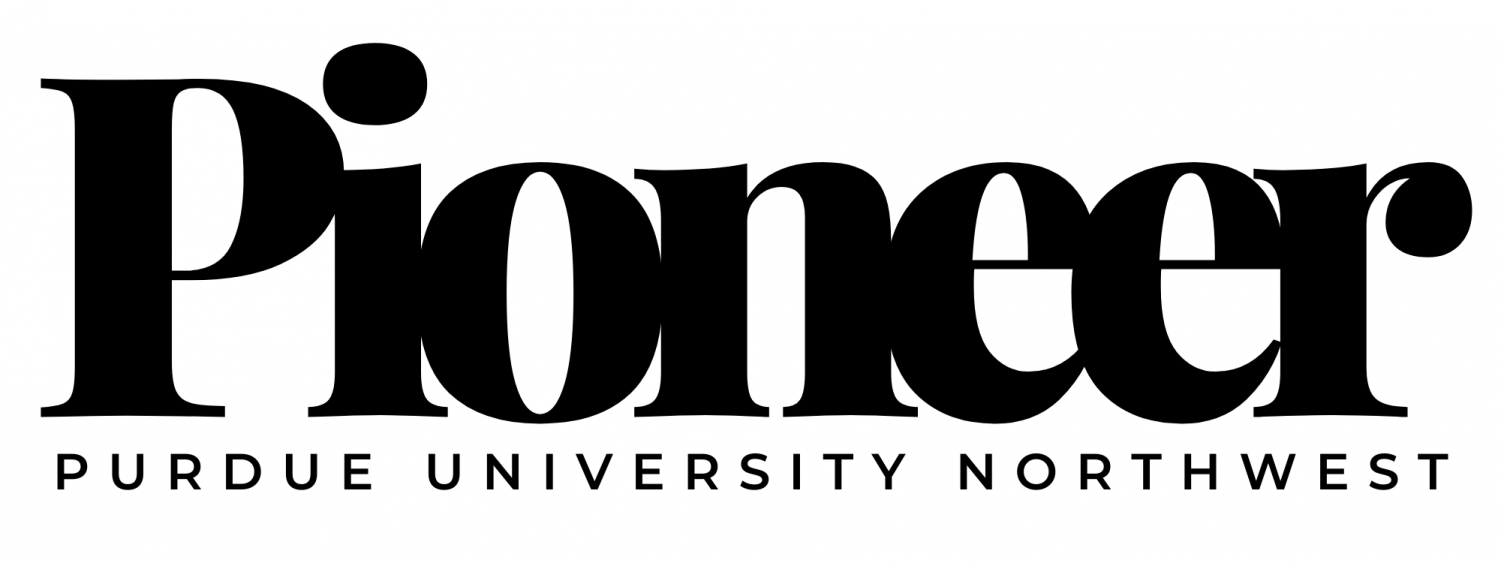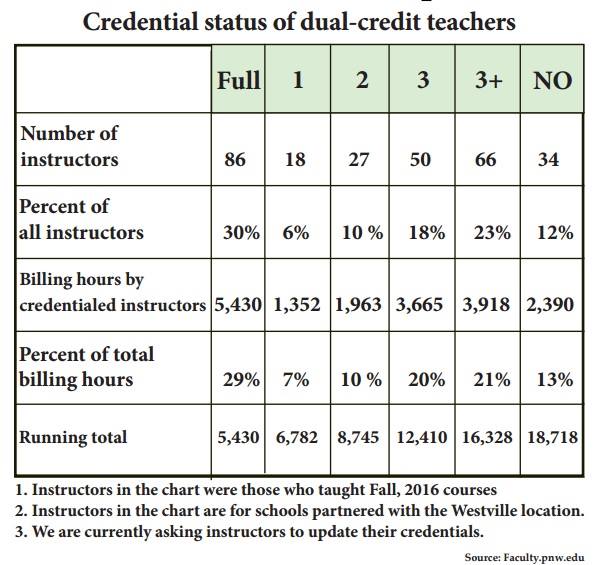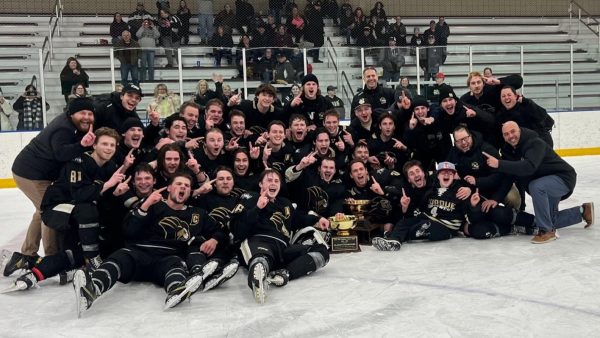Dual-credit debacle
78% of PNW’s dual-credit instructors not qualified
According to a report by Jeff Shires, executive director of Concurrent Enrollment/Dual-Credit, 86 of PNW’s 281 dual-credit instructors meet the Higher Learning Commission’s qualification requirements. Of those that are qualified, Shires said many of them are nearing retirement and that PNW’s rate of qualified instructors is higher than the state average of 25 percent.
The learning commission requires dual-credit instructors to have a master’s degree in the area of instruction, or at least 18 credit hours in pursuit of a master’s degree in the area of instruction. PNW’s Faculty Senate recently passed a document requiring all dual-credit instructors to meet qualification requirements by Sept. 1, 2019 if they wish to continue instructing dual-credit courses for PNW.
Shires said the state of Indiana created a pot of funds in 2016 of $2,000 per instructor to assist in getting those instructors qualified, but as of yet no funds have actually been added to it.
“We’ve received a gamut of responses [from high school administrators]. They gotta get people up or realize that they’re not gonna be able to offer dual-credit through PNW. Some high schools might go to another provider, like IUN or Ivy Tech,” Shires said.
The report, which was initially presented at the Feb. 10 Faculty Senate meeting in Westville by Shires, includes information on dual-credit instructors from the Westville campus who taught during the Fall 2016 semester. Dual-credit instructors have been asked to provide updated credentials for Spring 2017.
“Some folks have been angry and there have been some intense exchanges. Some school districts have threatened to examine all partnerships with PNW,” Shires said. “Schools need to understand that we’re about quality. We’re not gonna shut this program down. It’s a quality issue.”
Staci Trekles, a member of PNW’s Faculty Senate, said Crown Point High School, one of PNW’s larger dual-credit partners, is upset with the deadline of Sept. 1, 2019 for all dual-credit instructors to meet the learning commission’s requirement guidelines.
“If they’re upset with PNW, they’re gonna point students away from us and to other schools,” Trekles said.
With PNW facing a deficit of $8 million for 2017 and administrators looking to increase enrollment and retention, the report also included information on the benefits of retaining dual-credit students by enrolling at PNW when they graduate from high school. From 2012-14, the former Purdue University Calumet and Purdue University North Central retained 11 percent of its dual-credit students, which resulted in an income of $2,460,262. If PNW were able to retain 25 percent of its dual-credit students, it would result in an income of $6,670,376.
Efforts that have been made to increase retention and enrollment were included in the report and consisted of on-campus academic activities providing prospective students with library instruction, sitting in on a lecture, attending a research discussion, talking with a faculty member, attending a lab session and a campus tour and lunch where representatives mix with prospective students to discuss what PNW has to offer.
The prospective students who attended these events were asked to complete a survey consisting of three questions with answers ranging from a scale of 1-10, with 10 being very positive/much more likely. The questions were as follows: What was your opinion of Purdue Northwest before your visit, of which the 122 respondents answered with a mean of 6.65; what was your opinion of Purdue Northwest after your visit, 8.13; and has participation in the Concurrent Enrollment Program made you more likely or less likely to attend PNW post-graduation, 6.79.
New Student Orientation events have also seen an overhaul, with staff traveling to high schools to discuss deadlines and procedures for dual-credit, how to activate PNW accounts, billing, drop and withdrawal deadlines, academic probation and dishonesty policies and the available academic resources. This has resulted in fewer phone calls from students and parents seeking clarification as well as fewer unpaid bills.
A Concurrent Enrollment Club is currently being piloted with Westville High School. It was developed to help high school students understand the difference between high school level courses and university level courses as well as teach students how to use resources available for academic development and how to transition into becoming a university freshman. There are currently over 40 high school students involved with the program.




